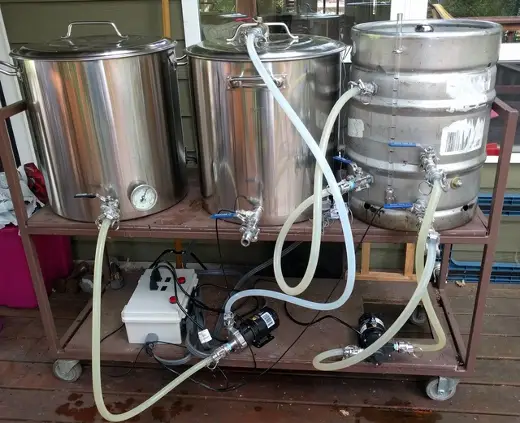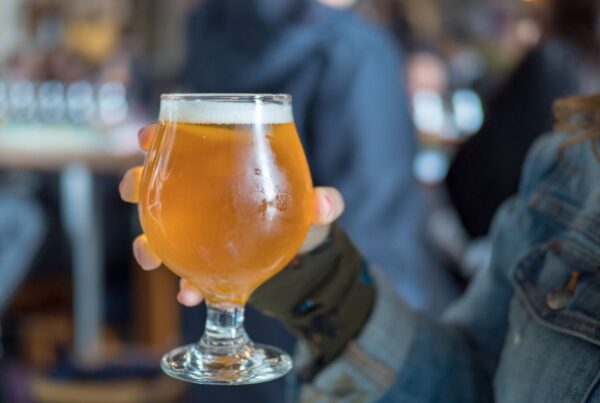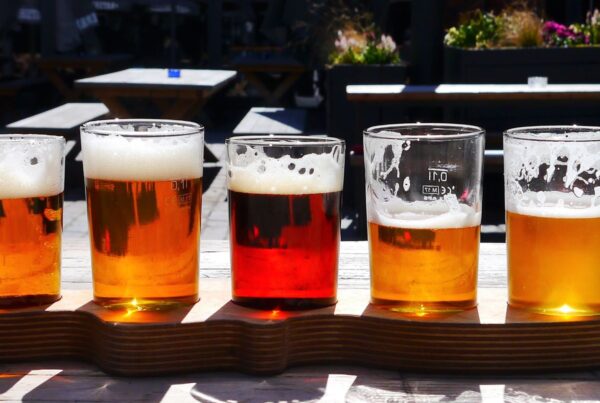How to Make Beer at Home with a Kit
It seems like home brewing has never been more popular than in 2023—no doubt riding the wave of “at home” hobbies that have flourished over the past few years. Using a beer making kit might sound a bit complicated, time-consuming, or even intimidating if you’re new to home brewing. But don’t worry—with a good “starter kit” and a clear understanding of what’s involved, it’s all perfectly doable, even for a beginner.
This guide aims to provide a comprehensive but accessible overview of making beer at home with a starter kit—guiding you through what’s involved in a detailed, step-by-step manner. We’ll cut through some common beer/brewing jargon, de-mystify the actual processes, and get you brewing at home in no time.
Ready? Let’s roll up our sleeves, sanitize our equipment, and get started:
Step 1: Get Equipped (with a Good Starter Kit)
The first step to brewing at home is to get a decent home beer-making kit. There are a few good options out there, with beer making starter kits catering to everyone from beginners to advanced brewers.
These kits might include a fermenter, airlock, thermometer, sanitizing solution, etc. But most importantly, they should include the 3 primary beer ingredients—i.e. malted grains, hops, and yeast. (As for the 4th main ingredient, you’ll have to supply your own water.)
Some home brew kits produced by breweries (like Coopers Brewery) provide literally the exact same ingredients they use in the brewery—making them like buying a home brewery in a box!
Step 2: Keep it Clean
A commonly overlooked (and incredibly important) part of brewing beer with a kit at home is sanitation.
All your beer making equipment should be sanitized meticulously to avoid the introduction of unwelcome organisms that can ruin your brew. Beer making at home can feel kind of like a battle against tiny, invisible foes, and sanitizing solution is how you defeat them. (Okay—that’s a little dramatic, but not by much.)
When you sanitize, every single item that will come in contact with your beer should be clean. This includes not just your “brewing” equipment, but also spoons, funnels, and anything else that’ll touch your wort or beer.
Expert Tip: Don’t forget the beer bottles themselves! These need to be sterilized to ensure they won’t harbor any sneaky microbes that could spoil your carefully-crafted beer.
Step 3: Brewing the Malted Grains
Brewing begins with steeping malts in warm water, making a kind of “malt soup.” This process, known as mashing, extracts the sugars and flavors from the grains, creating a sweet liquid, or wort.
Here’s a Beer-Nerd Tidbit: The temperature and duration of the mashing process significantly affect the beer’s flavor profile and alcohol content. More sugars mean more food for yeast and, consequently, higher alcohol content.
Step 4: The Boil (Hops, Meet Wort)
Next up, we bring the wort to a boil and add hops. This is when that all-important trio of bitterness, flavor, and aroma enters the equation, counterbalancing the wort’s natural sweetness. The timing and type of hops added will drastically alter your beer’s flavor and aroma.
Step 5: The Cool Down and Fermentation
Once the boil is complete, the wort needs to be cooled quickly.
Why the haste? Well, we’re in a race against bacteria that happen to have a fondness for sugar.
After cooling down, the wort is transferred to the fermenter and yeast is added, which starts the process of fermentation. Yeast consumes the sugars in the wort, producing alcohol and carbon dioxide.
Step 6: The Waiting Game
Fermentation usually takes approximately 1 to 2 weeks, but this can vary based on the yeast strain, temperature, and other factors.
Expert Tip: During this time, resist the urge to peek. Like the wise beer monks of old, practice patience. Meditate. Build a ship in a bottle. Whatever keeps your hands off the fermenter.
Step 7: Bottling
When the fermentation stage is finally complete, it’s bottling time! The beer is transferred into appropriately-colored bottles and priming sugar is added.
This second fermentation process creates carbonation in the beer. And then… more waiting! (It’s a real test of patience, but trust me—the payoff is worth it.)
Step 8: Pouring, Tasting, and Evaluating
Ideally, homebrew should sit in the bottle for about 2 weeks to fully carbonate and mature. Once the waiting game is over, it’s time for the moment of truth.
Pop open a bottle, pour your creation into a glass, and enjoy that first, hopefully delicious sip.
Expert Tip: Let the beer sit on your palate for a moment before you swallow. Is it sweet, bitter, or perfectly balanced? What flavors can you identify? How’s the texture? Is it light and crisp, or rich and creamy?
If it tastes good to you, then good news: you’ve succeeded!
If it doesn’t, don’t be disheartened: Every batch of beer you make with your starter kit will make the next one better. Make notes of everything you’ve done and observed. It will help you to refine your own process in your future home beer-making endeavors.
Even if your first few attempts don’t exactly hit the high notes, don’t get disheartened. With each batch, you’ll learn something new, use it to refine your technique, and get one step closer to making that perfect brew.






